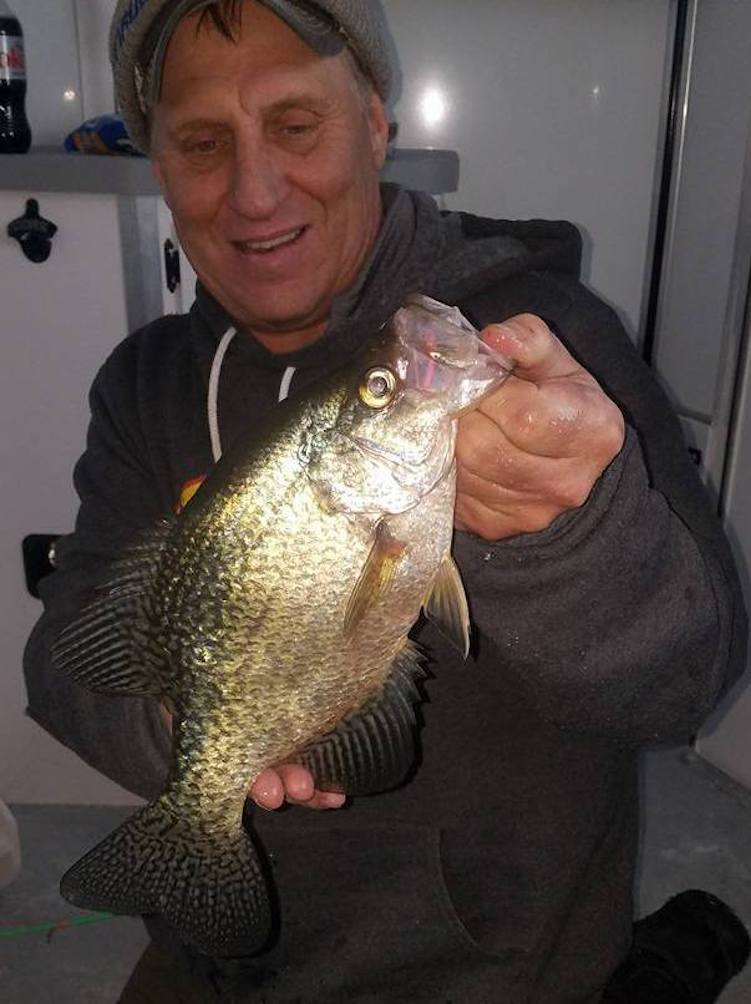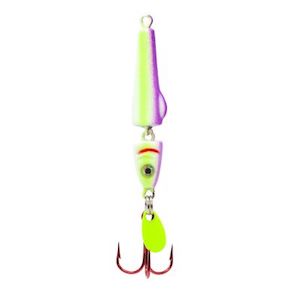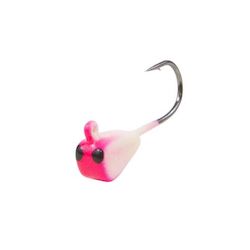Deep Crappies Provide Mid-winter Fun!
 Deep water crappies provide mid-winter action!
Deep water crappies provide mid-winter action!
By Mike Frisch
Mid-winter can be a bit of a difficult time for anglers as the hot bite of early ice, particularly for walleyes, has passed on most bodies of water. Those anglers who shift gears and chase panfish like crappies can, however, often find cooperative fish at this time. Here is a look at some thoughts on ways to find and catch crappies now.
Crappies at this time are often found roaming deep basins searching for food. Basin areas in some of the shallow lakes I fish are often in the 18- to 25- foot depth ranges, some of the deepest water available. Other lakes, with deeper waters, have deeper basins that hold fish.
Winter crappies often roam a particular basin, yet staying in the same general area. For that reason, anglers can often return to productive areas they found in previous winters or on previous trips and drill holes to pinpoint schools.
A key to this process is drilling holes to quickly find those schools. Here is where having a good ice auger is important. The K-Drill auger I use works great for searching basins as it is super lightweight and is powered by a cordless electric drill, so with a charged battery, it’s a reliable starter.
Another important part of basin crappie fishing is the use of a quality flasher sonar unit. Sonar allows me to see bottom, my bait, and any crappies near. “Seeing” fish is especially important as crappies are notorious for suspending in the water column and coming through at various depths. Being able to determine the level the fish are at allows me to quickly put my bait at that level, greatly increasing my odds for success.
I use the FLX-20 Vexilar flasher because it has ¼-inch separation allowing me to easily distinguish my bait and individual fish that often come in several at a time. Plus, this unit is very easy to use as well.
Finding roaming crappies and using sonar when presenting baits are two critical components to success. The last component involves bait and line selection. Small jigging spoons tipped with waxworms or minnow heads are standard fare for catching winter slabs.
Very recently I started using the new Jointed Pinhead Mino spoon for winter crappies. This spoon is available in a small 1/16-ounce size that appeals to crappies, comes in all the right colors, and features a jointed design for a very fish-appealing action that crappies can’t seem to resist.
Spoons are favorite lures for crappies because they often appeal to the bigger fish. Some days when the fish are a bit finicky, however, going with smaller tungsten baits is needed. In this case, a small tungsten jig like a Drop-Kick tipped with either waxworms or small panfish plastics will get the job done.
Tungsten, with its denser than lead property, works great because it sinks quickly to the fish while maintaining a smaller profile the fish will still hit. Tipping the jig with waxworms or small panfish plastics will often yield good results. Pink, red, and white jig and plastic color combinations produce well for me.
Light line and an ultra-light rod/reel combination completes my basin crappie rig. I spool with 3-pound Floroice, a fluorocarbon-coated line that resists freezing and stays limp and manageable even in the coldest conditions.
If finding mid-winter fishing fun is your goal, consider deep-water crappies. By heading to the basin of your favorite panfish lake and employing the tips suggested you can probably get in on some fast winter fishing action. As always, good luck on the ice and remember to include a youngster in your next outdoors adventure!
Mike Frisch is co-host of Fishing of the Midwest TV and a multi-species Minnesota fishing guide, view the website: www.fishingthemidwest.com to see more from Fishing the Midwest.



